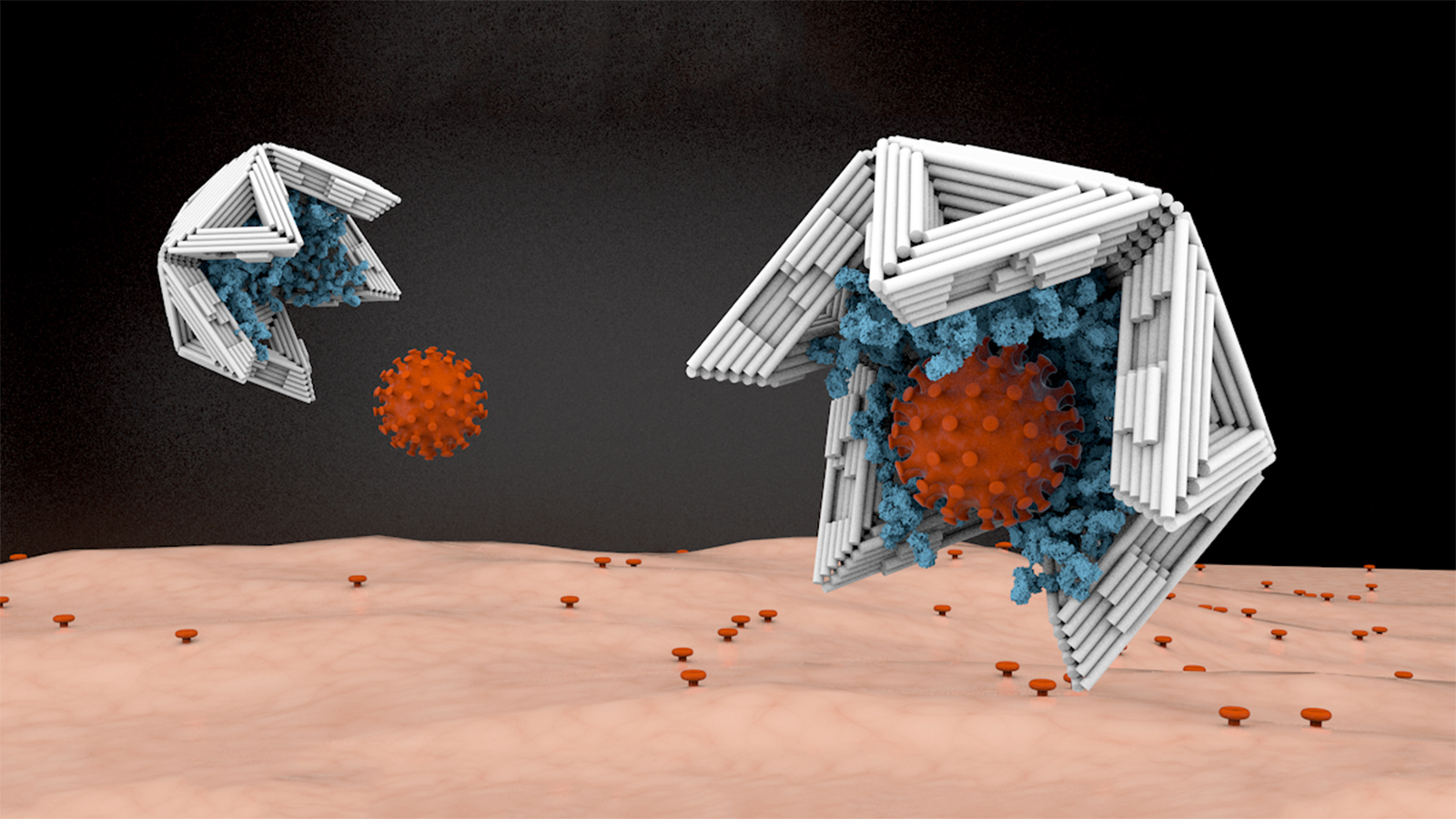
The corona pandemic and the SARS-CoV-2 virus are just two examples of the fact that in most cases there is no antidote to viral infections. And even vaccinations do not always provide complete protection. Unlike bacteria, against which antibiotics are generally used for therapy, medicine is generally powerless in the case of viruses. Researchers at the Technical University of Munich (TUM), Helmholtz Zentrum Munich, Germany, and Brandeis University, (U.S.), have now developed a method that could cure viral infections in the future.
DNA origami
This “virus trap” is based on findings by biologist Donald Caspar and biophysicist Aaron Klug who in 1962 discovered the geometric laws according to which the protein envelopes of viruses are constructed. Later, Hendrik Dietz, professor of biomolecular nanotechnology at the Physics Department of the Technical University of Munich, together with his team and with the support of Seth Fraden and Michael Hagan of Brandeis University in the U.S., developed a way to make artificial hollow bodies the size of viruses.
A few months before the outbreak of the corona pandemic, in the summer of 2019, the team came up with the idea of the “virus trap.” If nanocapsules of DNA – the material that makes up our genetic material – were lined with virus-binding molecules, they should be able to trap viruses and thus render them harmless. Of course, these hollow bodies would have to have openings large enough for the viruses to enter.
“None of the objects we had built so far using DNA origami technology would have been able to safely enclose an entire virus – they were simply too small,” says Hendrik Dietz, looking back. “Building stable hollow bodies of that size was a huge challenge.”
Virus trap based on a modular principle
The team eventually decided to base their “trap” on an icosahedron, an object made up of 20 triangular faces, and built the hollow bodies for the virus trap from three-dimensional triangular plates. The edges were beveled slightly to allow the DNA plates to assemble into larger geometric shapes. The correct choice and positioning of binding sites on the edges would then ensure that the plates would self-assemble into the desired objects, Dietz explains.
“This way we can now program the shape and size of the desired objects by the exact shape of the triangular plates,” he said. “We can now create objects with up to 180 subunits and achieve yields of up to 95 percent. The road to get there was quite rocky, though, with many iterations.”
Blocking 80 percent
By varying the binding sites on the edges of the triangles, closed hollow spheres can be produced as well as spheres with openings or half-shells which can then also be used as virus traps. The researchers tested the virus traps together with the team of Prof. Ulrike Protzer, head of the Institute of Virology at TUM and director of the Institute of Virology at Helmholtz Zentrum Munich, on adeno-associated viruses and hepatitis B virus nuclei.
“Even a simple half-shell of suitable size shows a measurable reduction in the activity of the viruses,” says Hendrik Dietz. “If we attach five binding sites for the virus on the inside, for example matching antibodies, we can already achieve a blockage of the virus of 80 percent; if we incorporate more, we achieve a complete blockage.”
To prevent body fluids from immediately degrading the DNA particles, the finished building blocks were irradiated with UV light and treated on the outside with polyethylene glycol and oligolysin. The particles then remained stable for 24 hours in mouse serum.
A universal construction principle
Now the next step is to test the building blocks in living mice, Dietz says. “We are very confident that this material will also be tolerated well by the human body.” Prof. Ulrike Protzer explains that bacteria have a metabolism, which is why they can be attacked in different ways. “Viruses, on the other hand, have no metabolism of their own, so antiviral drugs almost always target a specific enzyme of a single virus. Such development takes time. If the idea of simply eliminating viruses mechanically can be realized, it would be broadly applicable and thus an important breakthrough, especially for emerging viruses.”
According to the researchers, the manufacturing costs for the virus traps are biotechnologically justifiable in mass production. “In addition to the proposed application as a virus trap, our programmable system also offers other possibilities,” says Hendrik Dietz. “It would also be conceivable to use it as a multivalent antigen carrier for vaccinations, as a DNA or RNA carrier for gene therapy, or as a transport vehicle for drugs.”
Cover photo: Lined on the inside with virus-binding molecules, nanoshells of DNA material bind viruses to themselves, rendering them harmless. Image: Elena-Marie Willner / DietzLab
Also interesting:
Synthetic protein combats viruses by blocking sugar structures
Fighting COVID-19: Exploring two potential weak points of the virus
New, promising candidates for coronavirus drugs
New ways to fight SARS-CoV-2 – Molecule attacks virus
Is an enzyme the key to eradicating the SARS-CoV-2 virus?
Genes are a potential key to new COVID-19 treatments

